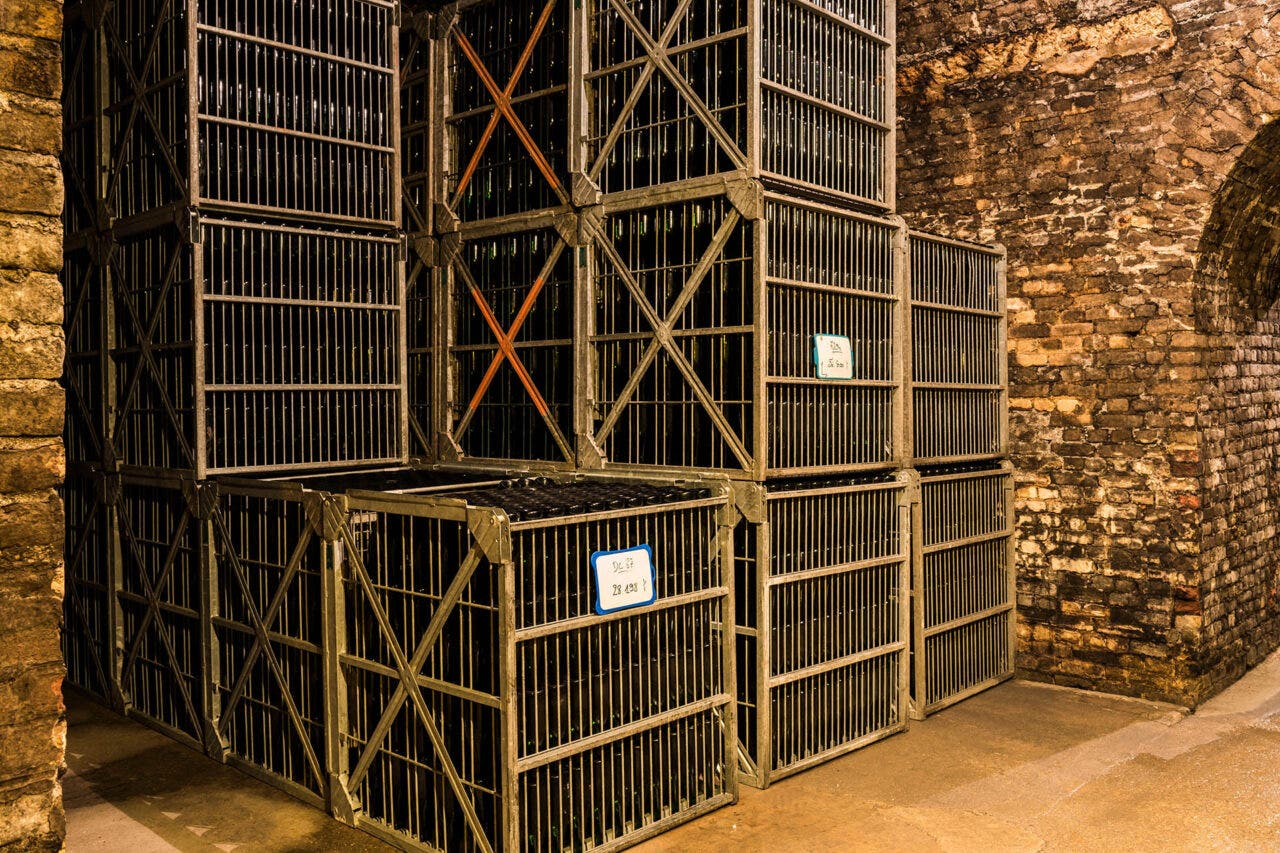It’s not your imagination: Champagne is harder to find these days. After a perfect storm of disruptions, the U.S. is currently in the early stages of a Champagne shortage that is expected to last several years.
First, the obvious issues. Supply chain issues caused by the coronavirus pandemic have left importers scrambling to anticipate what to order months in advance since delivery to the U.S. can now take twice or even three times as long.
The market has fluctuated over the last 18 months, too. In 2020, the demand for Champagne dropped 18% by volume, according to Comité Interprofessionnel du Vin de Champagne (CIVC), the trade organization for the Champagne region. But then, towards the end of the year, people wanted their celebratory drinks back and champagne sales soared.
The trend continued throughout 2021. Consumption statistics for this year aren’t available yet, but several industry members estimate the demand for Champagne has gone back to prepandemic levels.
“Consumers began to invest more heavily in luxury ingredients and high-end wines to enjoy at home, in lieu of dining out at restaurants,” says Laurance Alamanos, export manager for Champagne Ayala.

This created a new problem. The CIVC sets Champagne production limits every year, singling out how much can be harvested, how much should be reserved for future multivintage blends and how much will be turned into vinegar. In 2020, as countries experienced lockdowns and demand fell, the board set the upper limit for Champagne production about 25% less than in 2019.
“The initial decisions made by importers to slow—or even more drastically, to stop—importing wines is really a larger issue than the supply chain,” says Thatcher Baker-Briggs, a retailer, importer and owner of Thatcher’s Wine Consulting, whose inventory is at least 20% Champagne.
“Vintages during and after Covid will be where the actual shortage of Champagne will take place. We have not quite yet felt these impacts,” he added.
“We are seeing a domino effect with the great houses being affected first, then the less renowned ones.” —Laurance Alamanos
By law, Champagne must spend a minimum of 15 months on its lees to make a nonvintage bottling, which can blend grapes from multiple years. Vintage Champagnes, which are blended wines from a particular year’s harvest, age for at least two years and often much more.
As demand climbed throughout 2021, the Champagne region experienced unprecedented weather issues. First came scorching heat in March, which burned vines. Then, days of frost that froze them. In June and July, torrential rains created mildew on many of the remaining plants. Several growers lost more than half of their vines. This year’s harvest will be the smallest in decades.
“In Champagne, you have 34,000 hectares for roughly 16,000 producers and around 4,000 labels,” says Alamanos. “We are seeing a domino effect with the great houses being affected first, then the less renowned ones.”

The economics of Champagne continue to evolve, too.
“Alongside these challenges, the trend towards premiumization is impacting Champagne as well,” says Gabe Barkley, CEO of MHW, Ltd., a wine and spirits importer. “The demand for top cuvées is growing—and their prices increasing—at a faster rate than we have historically seen.” He points to Moët Hennessy Louis Vuitton’s February 2021 acquisition of Armand de Brignac, which makes Ace of Spades, as an example.
In the meantime, importers and retailers are getting creative to recommend other bubbly options in anticipation of higher prices and smaller inventories in the future. This has its own market implications. Pine Ridge Vineyards in Napa Valley, for example, has already sold out of its Chenin Blanc and Viognier sparkling wine.
“We haven’t been able to bottle it fast enough to keep up with the demand,” says Winemaker Colleen FitzGerald.
When will the shortage end? The bad news is production won’t be back to normal for several years, and prices will likely continue to increase. Even with a perfect supply chain, the time and materials required to create Champagne means inventory can’t catch up overnight.
“We do anticipate that reduced production in recent vintages will affect the market for years, with 2023 through 2025 being the most impacted by volume,” says Barkley.
Bindiya Vakil, CEO of Resilinc, a leading supply chain monitoring corporation, agrees.
“It looks like supply chain issues will last into 2023,” says Vakil. “Labor and raw material shortages, port bottlenecks and climate change are crucial components delaying the production and shipment of Champagne globally. Unfortunately, we’re seeing that supply can’t keep up with an increased demand for Champagne during the industry’s busiest time of year.”
Last Updated: May 8, 2023















